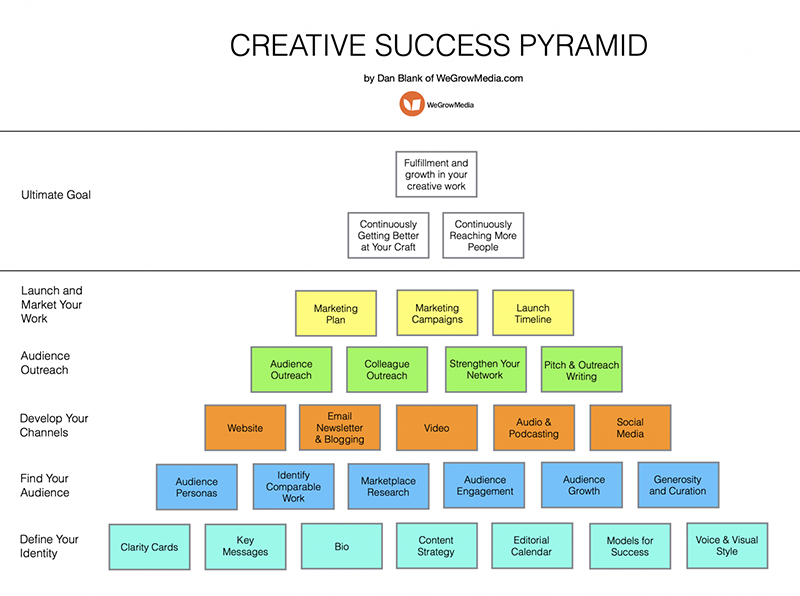When I’m working with a writer, we often begin by defining two things: what they want to say, and who they hope to reach. I have processes that we collaborate on to get a sense of total clarity. Today I want to discuss why these two things are meaningful if you are hoping to develop your author platform, find your readers, and market your writing. Let’s dig in…
What you want to say isn’t always clear. To others. To yourself.
The process I work through with writers to clarify what they want to say is called Key Messages. This is not just an elevator pitch, it is a deep look at what you want to say in your writing and outside of it. Why? Because in working with writers full-time for 12 years, I have found that we aren’t always sure what we want to say. Even to ourselves. Again and again I will work with a writer who will define their Key Messages, yet a week later they will make a statement such as, “Oh, and the absolutely biggest thing my writing is about is redemption.” I’ll check their Key Messages and say, “Well, the word redemption doesn’t appear anywhere on your Key Messages.” Oops.
This is a process, and it takes time. To know what we want to share with the world, how we can connect in a meaningful way, and feel a sense of authenticity in how we share. Likewise, this is a process of identifying what you want to say to others, and knowing what will resonate with them. This is different from an elevator pitch — some pithy statement that you hope is clever, and grabs people’s attention. Key Messages help you go deeper and focus on creating the moments, conversations, and experiences you hope for.
When you know what you want to say, you can define so much:
- How to have a simple conversation with someone you meet that aligns to what you write and why, without having it feel labored or self-involved.
- The content of your website.
- Your bio. Not just some short paragraph, but a longer expression that feels authentic to who you are.
- Your social media profiles.
- What you share on social media and email newsletters, ensuring it will be engaging to your ideal audience.
- How to frame how you launch and market your books and writing.
All that, just from knowing how to talk about what you write and why.
Who you want to reach is not a vague demographic. It is a real person.
So often, when a writer tells me about the ideal audience for their book, they focus on vague demographics. They may something like, “Oh my book is for women, ages 30 – 65, who love a good read.” It’s so vague, that I think it actually makes it more difficult to market their books. Don’t get me wrong, it sounds logical, and you can add all kinds of data to support these statements. E.G.: “My reader is college educated, which accounts for 73% of the book buying public.” (I made that stat up.) When I worked in a corporation, I would hear things like this all the time. It sounded strategic and smart… but we left the meeting without a single additional practical action to take.
What is the solution? Don’t focus on an audience at all. Instead, focus on just one person. One ideal reader.
When I’m working with a writer, we create an Audience Persona. This is basically the description of a single person who represents someone who would love what you write and share. We make this person very specific. We define their name, where they live, what they worry about, what their day-to-day looks like, what they are drawn to, what repels them, and more.
In doing so, we suddenly have a process to define so much of this author’s platform. Should they do a weekly newsletter? Well, would Jane (their persona) like that? We can then model this out. What would get Jane to subscribe? What would she love to receive? What would get her to unsubscribe? What would get her to tell a friend about your newsletter?
Focusing on one person is an amazing way to demystify the process of how we share, and work through any fear we have. In the past I have written entire newsletters to one person, meaning that in my draft I would think of one person in my audience. I would consider what I could share that would really help them, and in the draft, I would literally write their name at the top and craft the essay. Then, before I sent it out, I would remove their name, because the newsletter actually goes to thousands of people. (Hello!)
These two processes — Key Messages and Audience Personas — work together. Sometimes a writer I’m working with define their Key Messages and feel great about them, only to later realize that once they developed their Audience Persona, that something was missing in their Key Messages. Or vice versa. So we go back and adjust.
It’s not uncommon for writers fear that if they consider their audience too much, they will corrupt their writing by writing TO that audience. Meaning that they are intentionally discarding their own creative vision in order to replace it with what we think others want. I don’t find that to be the case. Again and again in working with writers, I have found that considering one’s audience only asks questions that strengthen what you want to say and how you do so.
All of this is work I do as part of moving through what I call The Creative Success Pyramid (click the image to see a high resolution version):
If you want to explore collaborating on this work for yourself, you can learn more about how I work with writers here.
Thanks.
-Dan

